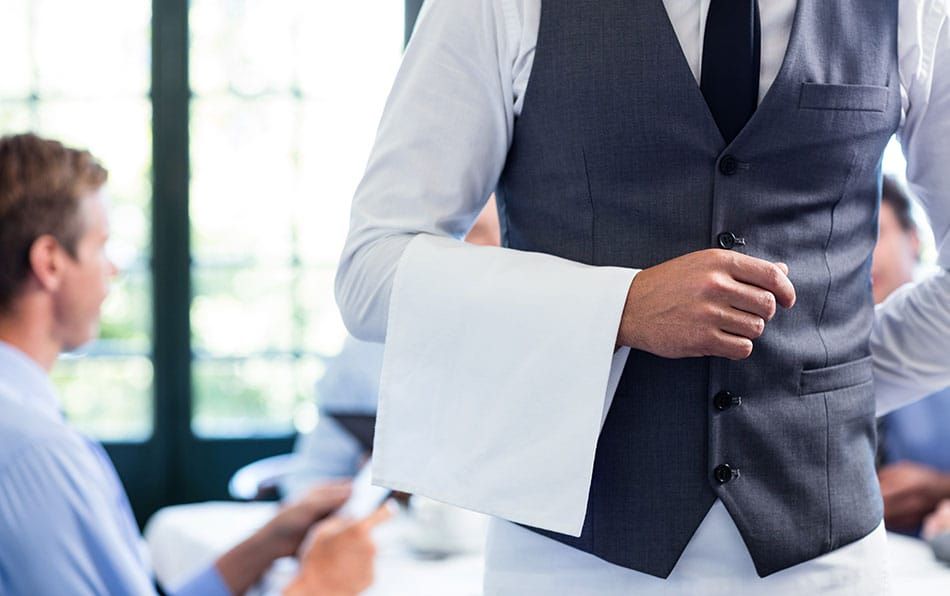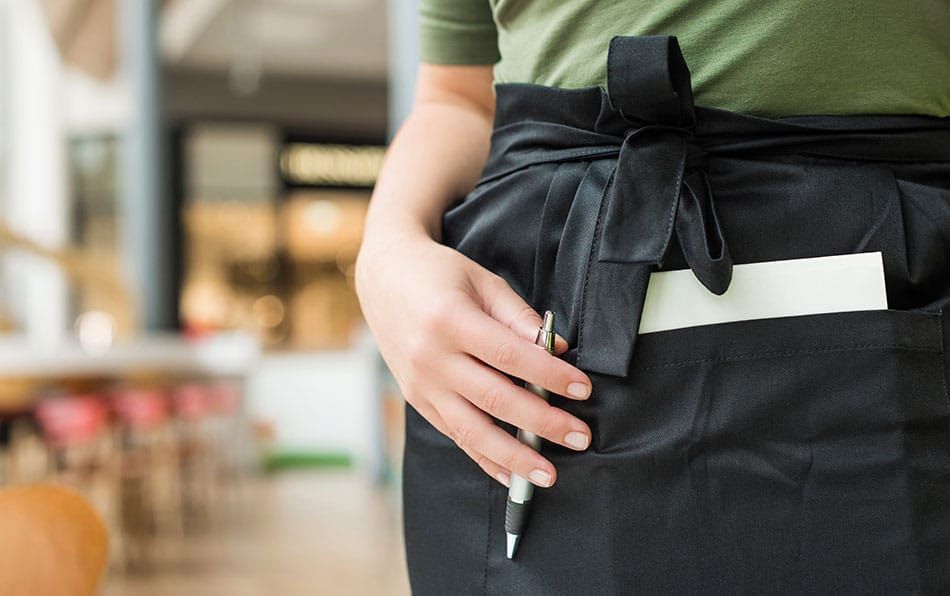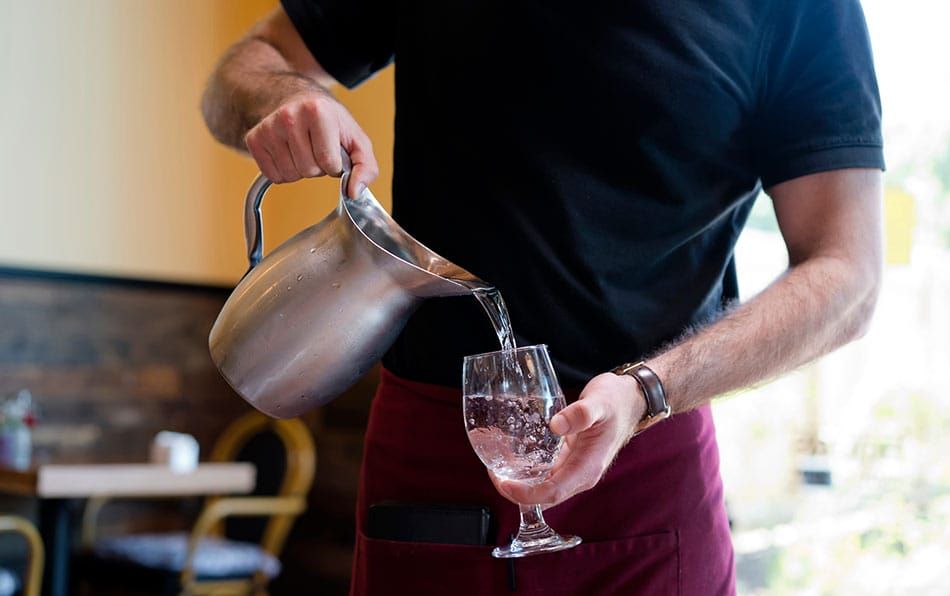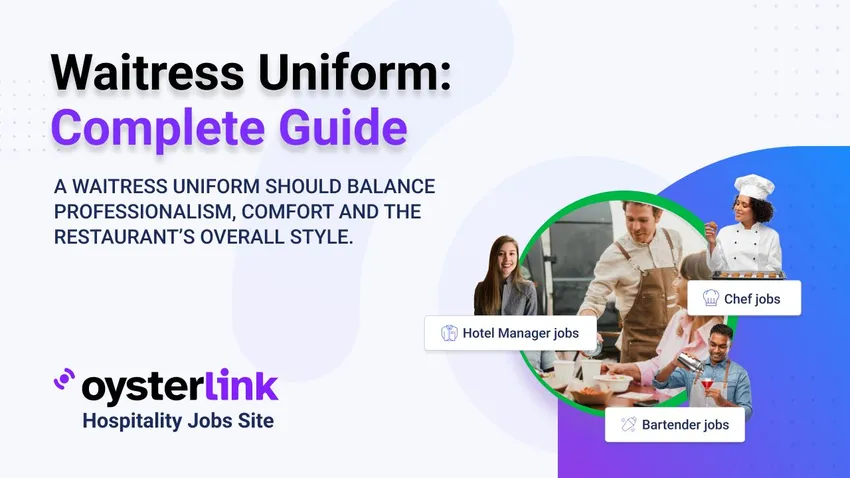Waitress Uniform Guide: Key Findings
- The style of a Waitress uniform should match the restaurant’s ambiance.
- Uniforms must be comfortable, safe and practical for long shifts.
- Waitress uniforms should adapt to the season, cuisine and dining atmosphere while being well-maintained.
Learn what makes a good Waitress uniform, which styles are outdated and how to stay professional and comfortable at work.
Selecting the Right Waitress Uniform Style
When working as a Waiter or Waitress, you're always supposed to wear a uniform style that matches the overall ambiance of your workplace.
The choice is up to the management, as they have to ensure all employees' attire matches the establishment's identity.

Most of them aim for either a more modern, classic or casual look. Below you can see how these uniform styles differ:
Modern Uniforms
Modern waitress uniforms follow contemporary trends while focusing on comfort and practicality. Common choices include polos, button-ups or t-shirts paired with trousers or skirts, with sneakers or loafers for all-day wear.
Classic Uniforms
Classic waitress uniforms emphasize refinement and professionalism, often seen in upscale dining. Typical attire includes white shirts, black waistcoats or aprons, trousers or skirts, polished shoes, and sometimes bow ties or gloves.
Casual Uniforms
Casual waitress uniforms are designed to reflect a relaxed dining atmosphere, balancing style and comfort. Polo shirts or t-shirts paired with jeans or khakis are common, often finished with sneakers or loafers and branded with the establishment’s logo.
Key Components of a Waitress Uniform
Waitresses wear clothing that follows their workplace guidelines, balancing professionalism, comfort and style. In this video, a fashion industry professional explains what kind of clothes waitresses typically wear and how each piece contributes to the overall uniform.
Tops: Blouses, Shirts, Polos
The top plays a big role in comfort and in reflecting the restaurant’s vibe. Collared shirts are the most versatile option, while blouses, polos or t-shirts work depending on the formality of the setting, with breathable fabrics like cotton blends being best.
Bottoms: Pants, Skirts
The choice of bottoms is always influenced by the style the establishment is going for.
Pants and skirts are common options across all establishments, but their length should align with the place's overall atmosphere and dress code. It's also worth bearing in mind the top you chose and using it to find bottoms that match the style.
Footwear: Comfortable and Safe Shoes
Shoes should be comfortable, supportive and safe for long shifts on your feet. Non-slip soles, good arch support and breathable materials like leather or mesh are best, with many workplaces also requiring closed-toe styles for safety.
Accessories: Name Tags, Aprons, Ties, Scarves
Bars and restaurants focus on small details in staff uniforms to create a polished look. Name tags help with customer interaction, while aprons add functionality, letting servers carry pads, pens and other tools. They’re typically made from durable, easy-to-clean materials.

When selecting aprons, consider styles with multiple pockets to facilitate easy access to essential tools like order pads, pens and wine keys. For establishments aiming for a cohesive brand image, coordinating the color and design of accessories such as ties or scarves with the overall uniform can enhance visual appeal. It's also beneficial to choose accessories made from durable, easy-to-clean materials to maintain a pristine appearance.
How Cuisine and Ambiance Affect Waiter/Waitress Uniforms
While your final attire choices should depend on the exact look the establishment you work at is going for, your uniform may often be influenced by its cuisine and ambiance.
Let's look at how exactly these may affect the clothes you wear on your shifts:
Casual Restaurants
In casual restaurants, dress codes aren't that strict so Waiters and Waitresses can often choose the clothes themselves.
A standard t-shirt is always a good choice, just keep the design simple.
For bottoms, choose jeans and khakis and complete the look with an apron to protect your clothes.
The freedom of choosing the attire yourself leaves you more room to find something that's breathable and easy to work in. Still, your goal should be to choose something that gives both a professional and relaxed look.
Fine Dining Establishments
Fine dining establishments are all about giving a sense of refinement and professionalism. When working in a place like this, you'll usually be provided a formal uniform.
They do this to ensure all staff members wear the clothes that match their high standards. If there's anything the management leaves up to you, aim at emphasizing elegance and pay close attention to details.
Cafes and Bistros
In cafes and bistros, you'll usually encounter a more casual and relaxed atmosphere and your uniform will reflect this.
T-shirts are a common option and it's all about looking more approachable to customers. Also, in these types of establishments, aprons are regularly a part of the uniform.
Sometimes, they allow staff members to express their personal style, as long as it aligns with the overall ambiance of the place.

Bars and Pubs
The uniform choice in bars always depends on the overall ambiance. In some of these, Bartenders and Waiters or Waitresses have to wear more formal clothes. This is usually the case in bars that offer more refined drinks and want to create a sense of elegance.
Pubs usually aim at a more relaxed vibe, so you'll encounter less formal dress codes. T-shirts with the pub's logo and other themed designs are a common option.
While not always an acceptable choice for Waiters and Waitresses, plaid shirts and sweaters can work in both these types of establishments.
Seasonal Waitress Uniform Considerations
Adapting waitress uniforms to seasonal changes ensures comfort and practicality. In warmer months, opting for breathable fabrics like cotton or linen can help maintain a cool demeanor during service. Lightweight, short-sleeved shirts or blouses paired with skirts or tailored shorts may be appropriate, depending on the establishment's dress code.
Conversely, during colder seasons, incorporating layers such as vests or cardigans and choosing materials like wool blends, can provide necessary warmth. It's essential to maintain the establishment's aesthetic while ensuring staff comfort throughout the year.
Waitress Uniform Maintenance and Care
Proper maintenance of waitress uniforms is crucial for a professional appearance. Regular laundering according to fabric care instructions preserves the integrity and longevity of the garments. Utilizing stain-resistant treatments can aid in managing common spills encountered during service. Additionally, ensuring uniforms are neatly pressed and free from wrinkles contributes to a polished look, reflecting positively on the establishment's standards.
Waitress Uniform Guide: Final Thoughts
When working as a Waiter or Waitress, it's important to wear something that matches the overall tone of the place and allows you to move around freely. If the choice is up to you, follow the tips from this article to ensure you feel comfortable during your shift.
Lastly, if you're searching for a job in this role, always check if the Waiter/Waitress job description mentions something about the dress code. That way, you'll know what clothes to look for when choosing your attire for work.










Loading comments...